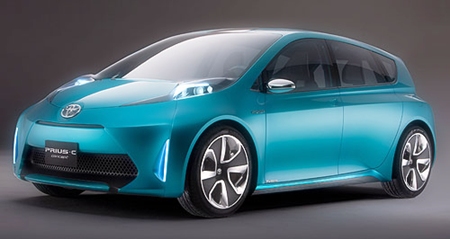Toyota is discovering (rather late in the piece) that the average car buyer is not interested in the technology in the car, but is more interested in tangible benefits to the consumer – and not the environment.
Senior Toyota executive director sales and marketing David Buttner came out to say, “Do you know how your plasma TV works? Do you know how your microwave oven works? Do you care, as long as you get a good picture and your food comes out hot?” And of course, he is totally correct.
“We are really questioning from a marketing and strategic point of view whether we have been spending too much time trying to educate the consumer rather than talk about the benefits of the technology.”
 New Prius C
New Prius C
Now, with the Prius C compact hatch and Prius V wagon set to join the range in the first half of 2012, Toyota believed it was time to place more emphasis on the benefits of hybrid technology, he said.
Benefits from the new technologies can be seen in fuel economy figures, with the new plug-in version Prius PHEV achieving official fuel economy of 2.2 liters per 100 km and CO2 emissions of 49 gm per kilometer, making it almost twice as efficient as the standard Prius that consumes 3.9 L/100 km and emits 89 gm/km of CO2. However, Toyota is still missing the point that the buyers out there are not excited about CO2 levels, unless they are committed tree huggers. The buyers can understand fuel economy. The environment can look after itself, with CO2 levels still being considered a trace gas at a concentration of 0.039 percent by volume of the earth’s atmosphere. Yes, you are reading that correctly, less than four hundredths of a percent. The generally accepted composition of dry air is roughly (by volume) 78.09 percent nitrogen, 20.95 percent oxygen, 0.93 percent argon, 0.039 percent carbon dioxide, and small amounts of other gases. Air also contains a variable amount of water vapor, on average around 1 percent. Lesson over.




